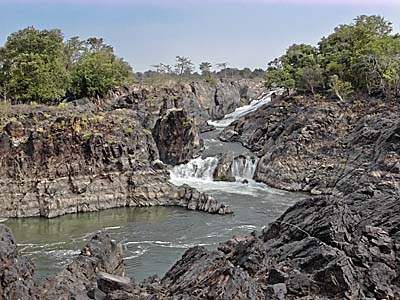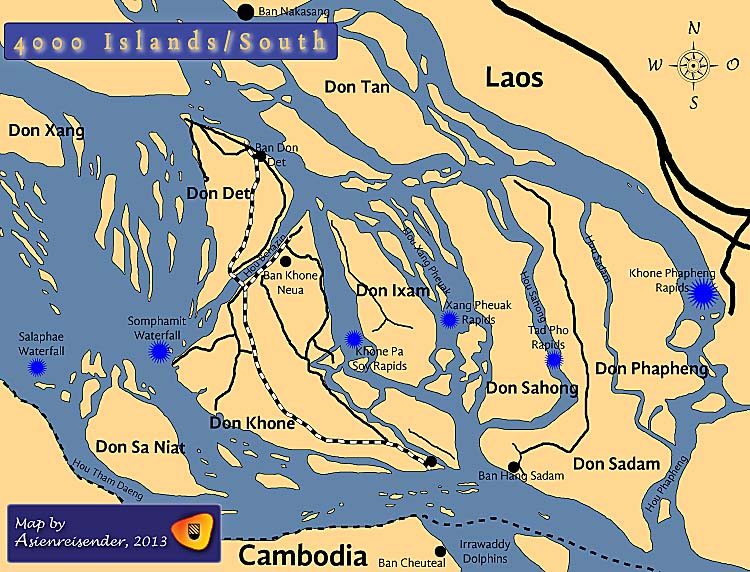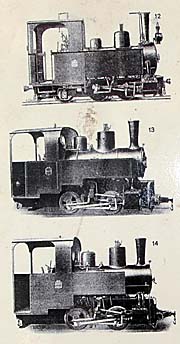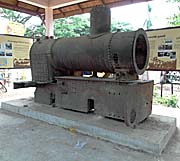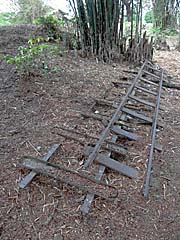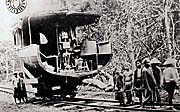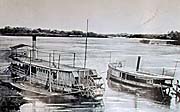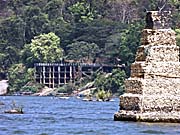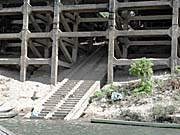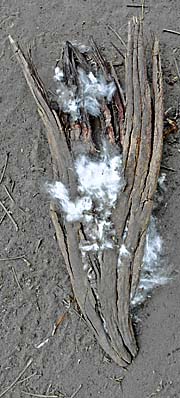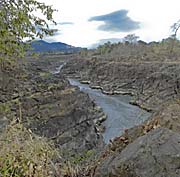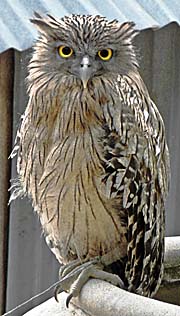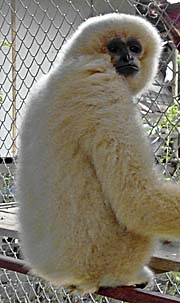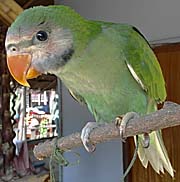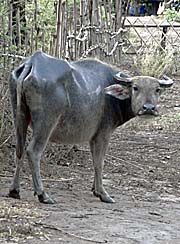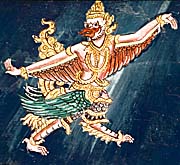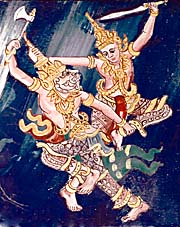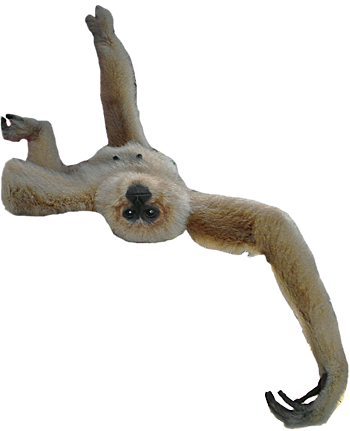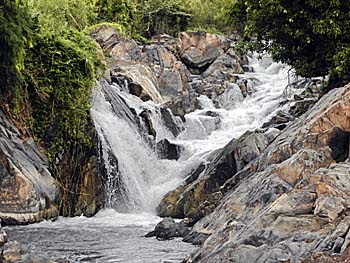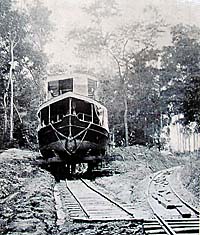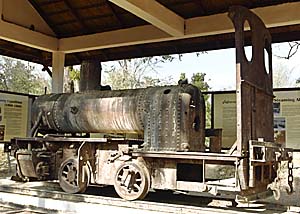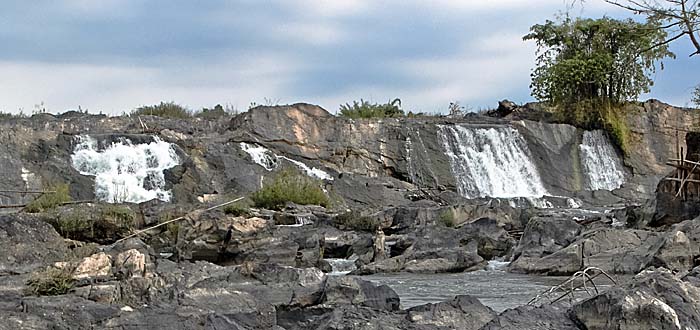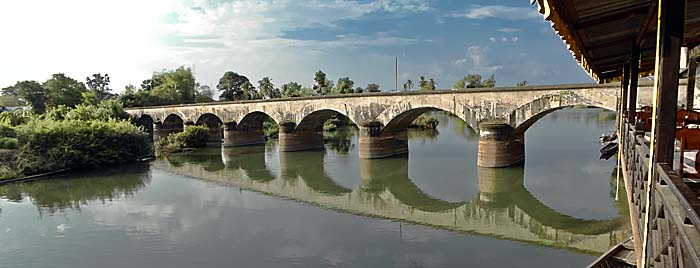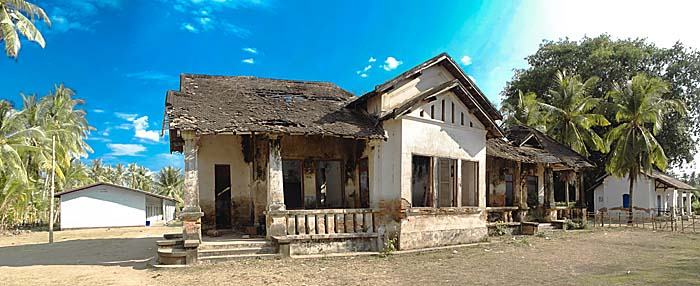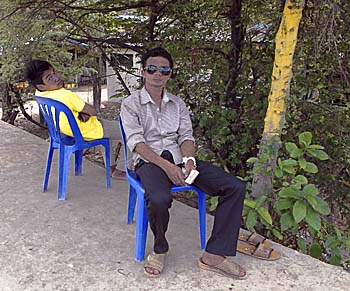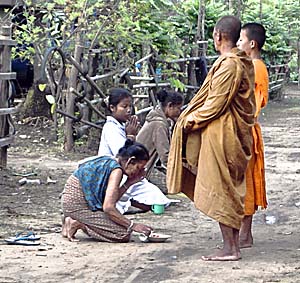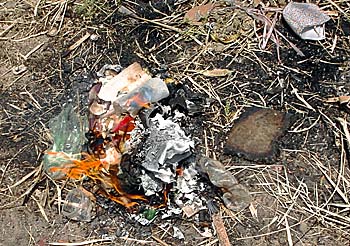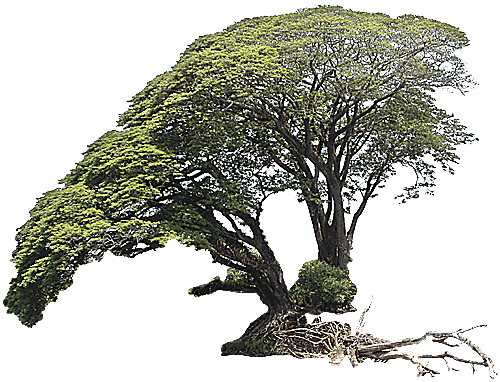The Mekong section at the 4000 Islands is very rich in wildlife. Though, in dry season there are less animals to see than in rainy season. When the rice paddies on the islands dry out, a number of fish species who live in the paddies are leaving them and migrating into the Mekong channels. The local peasants have methods to catch part of them.
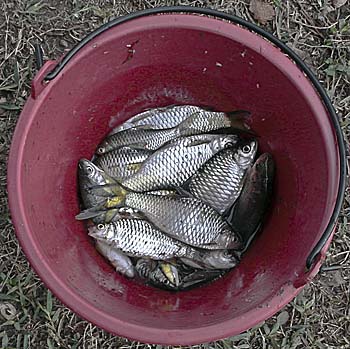
One early morning an angler appeared next to my place. Every time he threw his rod into the water immediately he pulled a fish out. Within a short time the bucket filled up. Image by Asienreisender, 2013
At the beginning of dry season at the end of October / early November other fish species are migrating riverupwards from Cambodia. They come to the 4000 Islands to spawn. Local fishermen catch a critical part of them for their own needs or to sell them to the markets of other places, including the biggest city around, what is Pakse.
Over the duration of the dry season other fish species arrive here, either to spawn or to make their way further riverupwards to spawn there. The locals catch many of them in simple, but big bamboo traps. The fish who migrate along are middle-sized or big fish species.
The Hou Sahong Channel is a critical passway for certain migratory fish species riverupwards. Due to heavy overfishing in the channel the species are suffering and getting endangered. This is not a new problem but happened already decades ago. It's just too easy for the local fishermen to catch fish in this bottleneck. Fishermen living upstream up to Vientiane claimed that they wouldn't catch enough fish anymore to feed their families because many fish species suffered too heavy losses at the 4000 Islands. Because of that the Laotian government repeatedly banned fishing in the Hou Sahong Channel.
But now there is the construction of a dam exactly at the end of Hou Sahong Channel ongoing. Blocking the channel would have a huge impact on all the fisheries upstream and downstream, and hurt the migratory fish species heavily, leading to the extinction of some, if not many.
Mekong fish is the most important source of animal proteins for a great deal of the people of Laos, Cambodia and Vietnam (up to 90%).
In July, when the Mekong River has increased to a high water level, many traps and fishing nets are swept away by the strong current. The local people don't remove them right in time. The loose fishing nets then become a deadly trap for other fish and also the Irrawaddy Dolphin, of whome many find a miserable end in them.

A single Irrawaddy Dolphin south of Don Khone, already in Cambodian waters. Some 100m away from the photographer. Normally they appear in couples. Besides they come only for a very short moment up to the surface and it's barely possible to predict where they will come up next time. That's one of the poorest images by Asienreisender, 2013
Well, as just mentioned, there are a few couples of the Irrawaddy Dolphin left in the river section south of Don Khone. Most of them appear at the Cambodian side of the river. A WWF (World Wildlife Fund) estimation from 2011 numbers the Irrawaddy Dolphins in the whole Mekong on between 78 to 91 individuals. A few decades before there were thousands of them living in the great river. It's not unprobably that the Irrawaddy Dolphin will extinct within the next few years. The construction of the Don Sahong Dam will certainly accellerate this prediction.
The Irrawaddy Dolphin enjoys a certain popularity among the local people. There are numerous stories around that dolphins helped fishermen driving fish into their nets and even rescuing their lives from drowning when fallen into the water or being attacked by crocodiles.
Crocodiles do not appear here anymore. They must be extinct around here and are nowadays mostly bred in stations under industrial conditions in Thailand and Vietnam. A crocodile skin brings a lot of money, but as a free-living animal it is a permanent danger for people living with and in a river.
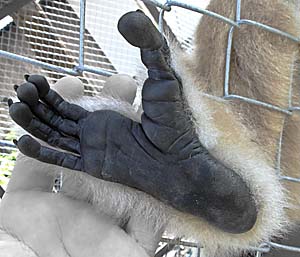
A gibbon's foot. The nice fellow is very keen on physical contact. His feet are optimized for climbing and to encompass smaller and bigger branches. Image by Asienreisender, 2013
In one of the places on Don Khone in a garden is a bigger cage with a gibbon monkey in it. The cage is kept clean, it's high and equipped with two swings. The fellow has a place to hide a little bit. Nevertheless he looks unhappy. He is seemingly a young one and happy for visitors who touch him and stroke his back. He pushed his arm through the grid and laid his hand on my shoulder. Very nice. Like a friend. Less nice was the following unexpected trial to take my spectacles over.
At another place, one of the simple peasant shacks on Don Det at Hou Behanzin Channel, I found an owl bound with a string. The fellow looked seemingly unhappy, frightened and unwell. He was always disturbed by ongoing activities around instead of being able to sleep in day time. When I was approaching he tried to fly away but was rapidly stopped by the string what provided him a crashdown. The owner of the place noticed that and came after a while out and pulled the big bird back with the string to the destinated place.
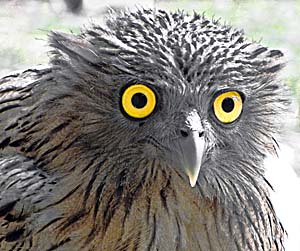
The owl, seemingly frightened and irritated by being in captivity for days already. Image by Asienreisender, 2013
I saw the owl there for two days. On the third day when coming along there it was gone. I asked the guy there what happened to the bird, and he told me it was gone away, escaped. I hope that's true and it could make himself free. Could also be that it ended up in the locals familiy food... At least I found the string at the ground and the loop looked ripped - that makes me being in good hope for the remarkable animal.
At again another place I saw locals keeping parakeets, bound on short strings. There is also the habit of keeping more common birds like doves and beos (hill mynas) in small cages.
One morning, when jogging from Hou Behanzin Channel to the southern tip of Don Khone, I saw something on the way which I thought it would be a branch. When I was passing by it very closely (10cm distance from my foot) I realized in a late second glance that the thing had a head. It was some 150cm long, some 8cm in diameter, with an intensive dark-brown and bright-brown pattern. It didn't move. I stopped two meters further and had another look for it. The snake turned then and disappeared into the bushes. Surprising encounter, but most of these scary animals are not aggressive or even harmful. The two only troublesome animals I know are mosquitoes and dogs. And then there is homo sapiens...
